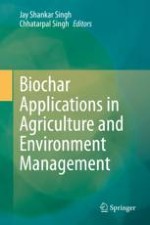2020 | OriginalPaper | Buchkapitel
7. Role of Biochar in Carbon Sequestration and Greenhouse Gas Mitigation
verfasst von : Dipak Kumar Gupta, Chandan Kumar Gupta, Rachana Dubey, Ram Kishor Fagodiya, Gulshan Sharma, Keerthika A., M. B. Noor Mohamed, Rahul Dev, A. K. Shukla
Erschienen in: Biochar Applications in Agriculture and Environment Management
Aktivieren Sie unsere intelligente Suche, um passende Fachinhalte oder Patente zu finden.
Wählen Sie Textabschnitte aus um mit Künstlicher Intelligenz passenden Patente zu finden. powered by
Markieren Sie Textabschnitte, um KI-gestützt weitere passende Inhalte zu finden. powered by
